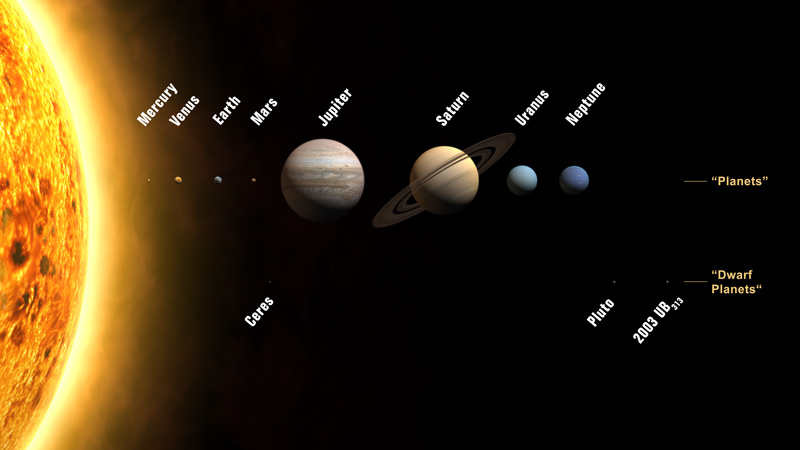The orbit of Jupiter, like that of all the planets, is elliptical instead of circular. At perihelion(closest approach) Jupiter comes within 741 million km, or 4.95 astronomical units(AU), of the Sun. An astronomical unit is the average distance from the Earth to the Sun and is used to make astronomical distances easier to communicate. At its most distant point, called aphelion, Jupiter is 817 million km, or 5.46 AU from the Sun. The average between perihelion and aphelion is called the semi-major axis. Jupiter’s semi-major axis is 778 million km, or 5.2 AU.
Jupiter is the fifth planet from the Sun, but it is the third brightest object in the night sky here on Earth. Since Jupiter is farther from the Sun, you would expect it to take longer to orbit, but did you know that it takes 11.86 Earth years, or 4331 Earth days for Jupiter to complete one orbit? Jupiter travels at 47,002 km/h through ts orbit. Its orbit is inclined 6.09 degrees from the the Sun’s equator. Several of the planets have seasons, similar to Earth’s, but Jupiter does not. It rotates too fast for seasonal variations(Jupiter rotates every 10 hours).
Jupiter has several companions in its orbit. By companions, I mean moons. There are 64 known moons in orbit around Jupiter with a few more being suspected. The largest four(Io, Europa, Ganymede, and Callisto) are are called the Galilean satellites. They are diverse and interesting worlds of their own. Io is the most volcanically active body in our Solar System. Europa is covered in water ice which may be covering an ocean of slushy water. Ganymede is larger than Mercury and it is the only moon in the Solar System that generates its own magnetic field. Callisto’s surface is heavily cratered and some of the larger craters may have been in place shortly after the creation of the Solar System, yet some small craters show indications of recent geologic activity. Four of Jupiter’s moons are thought to be the source of its rings. Adrastea and Metis contribute to the main ring and the halo ring. Amalthea and Thebe contribute to two separate gossamer rings.
The orbit of Jupiter is beyond comparison in our Solar System. The Jovian influence can be felt well beyond its orbit. There is so much within that orbit that scientists can make an entire career out of studying the Jovian system.
Here’s an article on Universe Today about how Jupiter might have caught one of its moons while orbiting the Sun, and more detailed information about how long a year is on Jupiter.
Here’s Hubblesite’s News Releases about Jupiter, and more information on Jupiter in NASA’s Solar System Exploration pages.
We’ve also recorded an entire show just on Jupiter for Astronomy Cast. Listen to it here, Episode 56: Jupiter, and Episode 57: Jupiter’s Moons.
Source:
http://solarsystem.nasa.gov/planets/profile.cfm?Object=Jupiter&Display=Facts

